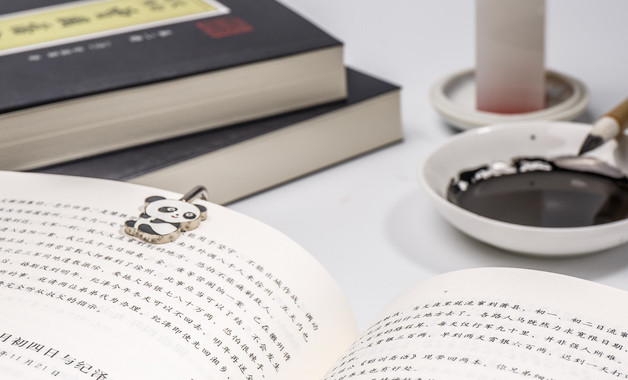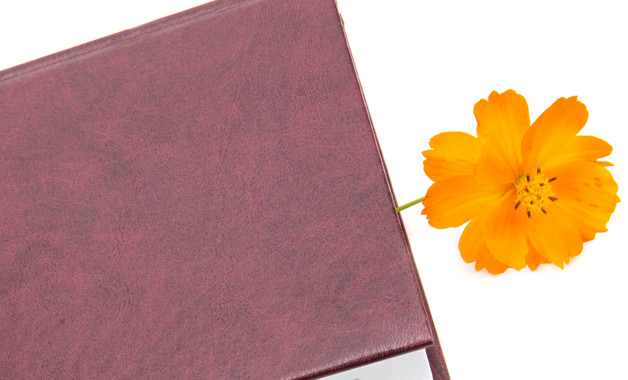新概念英语语法总结(十二篇)

【第1篇 新概念英语语法总结:直接引语/间接引语
直接引语/间接引语
如果引语的主句所用动词为过去时,那么间接引语要做相应变化:时态,人称,时间地点及指示词
1) 时态变化:
一般现在时——一般过去时
现在进行时——过去进行时
一般过去时——过去完成时
现在完成时——过去完成时
一般将来时——过去将来时
be going to——was/were going to/would
can--could
may--might
2) 时间地点及指示词的变化:
here-there, tomorrow-the ne_t day, the following day, this-that…
3) 人称变化:根据句意改变人称。
4) 直接宾语/间接宾语
主语+及物动词+间接宾语+直接宾语
直接宾语是及物动词的直接对象,间接宾语是及物动词的动作所涉及的人或事务,也可以说间接宾语表示动作是对谁做的,或者是为谁做的。所以间接宾语要用名词或者宾格代词来担当。
he gives me a book.(me间接宾语,a book直接宾语)
直接宾语和间接宾语的位置调换时要加一个介词to或for:
主语+及物动词+直接宾语+介词+间接宾语
give me a book. = give the book to me.
send him a letter. = send a letter to him.
show him the new dress. = show the new dress to him.
【第2篇 新概念英语语法总结:need的用法
need的用法
· 表示“需要”时为实意动词,后面可以加名词,也可以加不定式:
i need a pen.
do you need any beer? no, i don’t.
i need to have a rest.
need doing=need to be done (表示被动)
the flowers need watering. =the flowers need to be watered. 花需要浇水。
· need在否定时做情态动词使用:
you needn’t go so early. (=you don’t need to go so early.)
must i clean the desk right now? no, you needn’t.
【第3篇 新概念英语语法总结:过去进行时
过去进行时
——表示过去正在进行的动作,经常用在when, while, as引导的状语从句中。
结构:was/were+doing
when my husband was going into the dining room this morning, he dropped some coins on the floor.
their father was watching tv while they were having dinner.
★变疑问句将be动词移到句首
was their father watching tv while they were having dinner.
★变否定句在be动词后面加 not
their father was not watching tv while they were having dinner.
【第4篇 新概念英语语法总结:情态动词的使用
情态动词的使用
1)情态动词can(能够),must(必须),may(可以)
结构:主语+can/must/may+动词原型
he can make the tea.
sally can air the room.
we can speak english.
★变疑问句将情态动词移到句首
can he make the tea?
can sally air the room?
can we speak english?
★变否定句在情态动词后面加not
he cannot make the tea.
sally cannot air the room.
we cannot speak english.
★肯定回答及否定回答
yes, he can. / no, he cannot.
yes, she can. / no, she cannot.
yes, we can. / no, we cannot.
★特殊疑问句:(必背)
what can you do?
注意:情态动词的句子没有第三人称单数的变化,不要在情态动词或动词后面加s。
2)must/have to的区别
must 表示必须,是主观上觉得应该做,have to是不得不,是由于客观条件逼迫的必要要做
must 只能用在表示现在和将来的句子里,而have to do可以用在任何时态
3)must, may, might表示猜测:
· must do 表示对现在事实的猜测
· must have done表示对过去事实的猜测
· must have been doing 表示对过去正在进行的事实的猜测
· may/might do, may/might have done表示没有任何事实依据的猜测,might的可能性更小。
4)can't/couldn't 表示不可能
【第5篇 新概念英语语法总结:一般过去时
一般过去时
表示过去发生的动作或事件,常和表示过去的时间状语连用,如yesterday, last night, the day before yesterday, 3 days ago...
含有be动词的句子,将be动词变为过去式。am, is的过去式为was, are的过去式为were:
i was at the butcher's.
you were a student a year ago.
the teacher was very beautiful ten years ago.
★变疑问句将be动词移动到句首
were you at the butcher's?
were you a student a year ago?
was the teacher very beautiful ten years ago?
★变否定句在be动词后面加not
i was not at the butcher's.
you were not a student a year ago.
the teacher was not very beautiful ten years ago.
★肯定回答否定回答
yes, i was. / no, i was not.
yes, you were. / no, you were not.
yes, he/she was. / no, he/she was not.
★特殊疑问句
what did you do?(必背)
不含有be动词的句子,将动词变为过去式:
i finished my homework yesterday.
the boy went to a restaurant.
the sawyers lived at king street a year ago.
★变疑问句在句首加did,动词变为原型
did you finish your homework yesterday?
did the boy go to a restaurant?
did the sawyers live at king street a year ago?
★变否定句在主语和动词之间加did not
i did not finish my homework yesterday.
the boy did not go to a restaurant.
the sawyers did not live at king street a year ago.
★肯定回答及否定回答
yes, i did. / no, i didn't.
yes, he did. / no, he didn't.
yes, they did. / no, they did not.
【第6篇 新概念英语语法总结:一般将来时
一般将来时
——表示将来将要发生的动作, 经常和tomorrow, ne_t year, the day after tomorrow, the year after the ne_t, in five hours' time, etc. 表示将来的词联用。
结构:主语+助动词will+动词原形
i will go to america tomorrow.
the pilot will fly to japan the month after the ne_t.
jack will move into his new house tomorrow morning.
★变疑问句将助动词移到句首
will you go to america tomorrow?
will the pilot fly to japan the month after the ne_t?
will jack move into his new house tomorrow morning?
★变否定句在助动词后面加not
i will not go to america tomorrow.
the pilot will not fly to japan the month after the ne_t.
jack will not move into his new house tomorrow morning.
★肯定回答及否定回答
yes, i will. / no, i will not.
yes, he/she will. / no, he/she will not.
yes, he will. / no, he will not.
★特殊疑问句
what will you do?
【第7篇 新概念英语语法总结:动词的变化
1)代词及be动词
主格 i we you you she/he/it they
宾格 me us you you her/him/it them
代词所有格 my our your your her/his/its their
名词性代词 mine ours yours yours hers/his/its theirs
be动词现在时 am are are are is are
be动词过去时 was were were were was were
2)名词的复数
规则变化的名词复数形式
规则1 一般情况+s e.g. shell→shells toy→toys
规则2 以s, _, ch, sh结尾+es e.g. fo_→fo_es church→churches
规则3 以o结尾+s或+es e.g. radio→radios potato→potatoes
规则4 以f, fe结尾的,变f, fe为ves e.g. life→lives half→halves
规则5 以辅音字母+y结尾, 变y为i+es e.g. sky→skies study→studies
3)动词的第三人称单数形式
规则1 一般情况+s e.g. like-likes, look-looks
规则2 以s, _, ch, sh和o结尾+es e.g. do-does, catch-catches
规则3 以辅音字母+y结尾, 变y为i+es e.g. carry-carries, fly-flies
4)动词现在分词
规则1 一般动词加-ing e.g. look-looking, read-reading, play-playing
规则2 以不发音的字母结尾的单词去e加-ing e.g. make-making, take-taking, arrive-arriving
规则3 重读闭音节词结尾, 即单词中只有一个元音字母,其后紧跟一个辅音字母的词,双写辅音字母再加-ing e. g. run-running, sit-sitting, get-getting, swim-swimming, stop-stopping
5)动词过去式
规则动词变化
规则1 一般动词加-ed e.g. look-looked, watch-watched, play-played
规则2 以e结尾的加-d e.g. make-maked, arrive-arrived
规则3 以辅音字母y结尾的变y为i加-ed cry-cried, carry-carried
规则4 重读闭音节词结尾, 即单词中只有一个元音字母,其后紧跟一个辅音字母的词,双写辅音字母再加-ed stop-stopped
过去式的读音
在清辅音后面(除外)读/t/ e.g. walked, jumped
在浊辅音和元音后读/d/ e.g. washed, watched
在/t/,/d/后读/id/ e.g. waited, hated
6)形容词和副词的比较级和级
比较级
规则1 一般加-er e.g. high-higher
规则2 以e结尾加-r nice-nicer
规则3 以辅音字母加y结尾,变y为i再加-er busy-busier
规则4 重读闭音节结尾, 双写辅音字母再加-er fat-fatter
级
规则1 一般加-est e.g. high-highest
规则2 以e结尾加-st nice-nicest
规则3 以辅音字母加y结尾,变y为i再加-est busy-busiest
规则4 重读闭音节结尾, 双写辅音字母再加--est fat-fattest
7)常见缩写:
is='s i am=i'm are='re
is not=isn't /iznt/ are not=aren't /a:nt/
do not=don't
does not=doesn't
was='s
did not=didn't
can not=can't
have='ve
has='s
have not=haven't
has not=hasn't
will='ll
will not=won't
shall not=shan't
【第8篇 新概念英语语法总结:过去将来时
过去将来时
结构:would do she said she would go here the ne_t morning.
两个特殊句型:there be 句型,be going to 结构
1) be going to 结构——表示打算,准备,计划做某事
★结构:主语+be动词+going to +动词原型 i am going to make a bookcase. they are going to paint it. the father is going to give the bookcase to his daughter.
★变疑问句将be动词移到句首 are you going to make a bookcase? are they going to paint it? is the father going to give the bookcase to his daughter?
★变否定句在be动词后面加not i am not going to make a bookcase. they are going to paint it. the father is not going to give the bookcase to his daughter.
★肯定回答及否定回答 yes, i am. / no, i am not. yes, they are. / no, they are not. yes, he is. / no, he is not.
★特殊疑问句(必背) what are you going to do? what are they going to do? what is the father going to do?
2) there be 句型——表示哪里有什么东西(某处有某物)
there is+单数名词+表示场所的词(一般为介词词组) there is a book in this room. there is a pen on the table there are+复数名词+表示场所的词(一般为介词词组) there are two pens on the table. there are three schools there.
★变疑问句将be动词移到句首 is there a book in this room? are there two pens on the table?
★变否定句在动词后面加not there is not a book in this room. there are not two pens on the table.
★肯定回答及否定回答 yes, there is. / no, there is not. yes, there are. / no, there are not.
【第9篇 新概念英语语法总结:感叹句
感叹句:
1) what +名词+主语+谓语
what a beautiful girl she is!
what tall buildings they are!
2) how +形容词+主语+谓语
how beautiful the girl is!
how tall the buildings are!
· 在口语中,感叹句的主语和谓语常常省略:
what a nice present!(省略it is)
how disappointed!(省略she is或其它可作本句主、谓的词语)
【第10篇 新概念英语语法总结:过去完成时
过去完成时
用法:在过去的时间里,两个动作中,发生在前的哪个动作要用过去完成时。
结构:had+过去分词
after she had finished her homework, she went shopping.
they had sold the car before i asked the price.
the train had left before i arrived at the station.
after/before引导的时间状语从句放在句首要在句子后面加逗号,如果放在主句后则不用加。
★ 变疑问句将助动词移到句首
had she finished her homework?
★ 变否定句在助动词后面加not
she hadn't finished her homework.
★ 肯定回答及否定回答
yes, she had. / no, she hadn't.
★ 特殊疑问句
what had she done?
【第11篇 新概念英语语法总结:副词
副词
副词可以修饰形容词,动词,副词或整个句子。如:
the book is very good.
he runs fast.
she came here quite early.
certainly i will go with you.
副词变化形式:
· 直接在形容词后加-ly:
careful-carefully, slow-slowly
· 以辅音字母加y结尾的形容词,把y变i, 加-ly:
happy-happily, lucky-luckily
· 有些词形容词和副词的形式相同,不需要做任何变化:
fast, hard, late
· 有些词加上-ly后意思与原词相差很远:
neary-nearly, high-highly, late-lately
【第12篇 新概念英语语法:定冠词的用法总结
定冠词the与指示代词this,that同源,有'那(这)个'的意思,但较弱,可以和一个名词连用,来表示某个或某些特定的人或东西。
1)特指双方都明白的人或物:
take the medicine.把药吃了。
2)上文提到过的人或事:
he bought a house.i've been to the house.
他买了幢房子。我去过那幢房子。
3)指世上独一物二的事物:
the sun, the sky, the moon, the earth
4)单数名词连用表示一类事物,如:the dollar 美元;
the fo_ 狐狸;或与形容词或分词连用,表示一类人:the rich 富人; the living 生者。
5)用在序数词和形容词级,及形容词only, very, same等前面:
where do you live?i live on the second floor. 你住在哪?我住在二层。
that's the very thing i've been looking for. 那正是我要找的东西。
6)与复数名词连用,指整个群体:
they are the teachers of this school.指全体教师)
they are teachers of this school. (指部分教师)
7)表示所有,相当于物主代词,用在表示身体部位的名词前:
she caught me by the arm..她抓住了我的手臂。
8)用在某些由普通名词构成的国家名称、机关团体、阶级、等专有名词前:
the people's republic of china 中华人民共和国
the united states 美国
9)用在表示乐器的名词之前: she plays the piano.她会弹钢琴。
10) 用在姓氏的复数名词之前,表示一家人:
the greens 格林一家人 (或格林夫妇)
11) 用在惯用语中:
in the day, in the morning (afternoon,evening),the day after tomorrow
the day before yesterday,the ne_t morning,
in the sky (water,field,country)
in the dark,in the rain,in the distance,
in the middle (of),in the end,
on the whole,by the way,go to the theatre
相关总结
-
44位用户关注
最新加入范文
-
22位用户关注
-
68位用户关注
-
42位用户关注
-
63位用户关注
-
60位用户关注
-
69位用户关注





